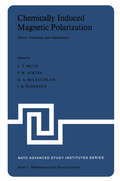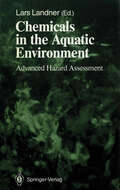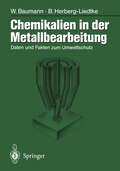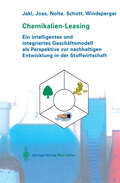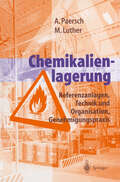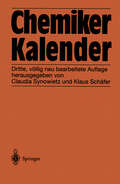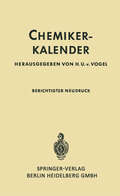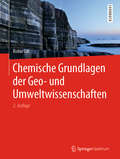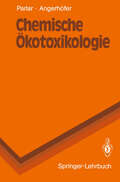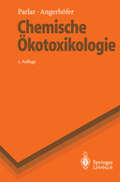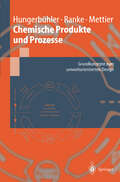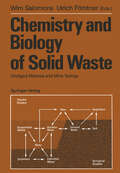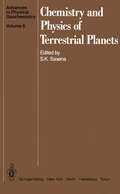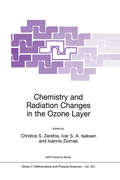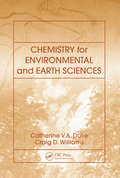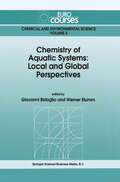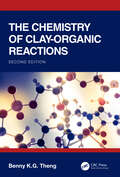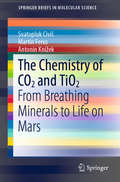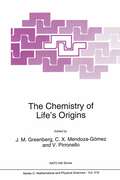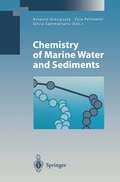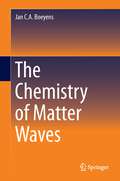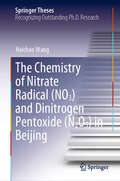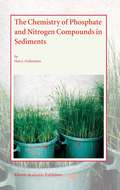- Table View
- List View
Chemical Weathering - Pavement and Cave (UEB uncontracted)
by RnibThis is a two-page document showing how the action of acidic rain causes weathering and degradation of limestone rock. Dashed line image borders surround the diagrams. There is a locator dot shown, which will be at the top left of the page when the image is the correct way up. The first page is a labelled cross section diagram of limestone rock with water running through a cave and an area of limestone pavement on the surface of the rock. The second page shows an enlarged view of the limestone pavement in plan and cross section views. Page 1: On this page the limestone rock is shown in cross section. The rock occupies the bottom half of the page. In the centre right of the image is a stream of acidic water, represented by a heavy dashed line, flowing to the left down a hill. It falls into the mouth of a swallow hole to a cave caused by the water dissolving away the rock it flows through. It continues to the left and eventually streams out of the rock at the bottom left of the page. There are stony spikes on the roof and floor of the cave: a stalactite and stalagmite made by dripping water depositing its dissolved limestone. The surface of the rocky area runs across the centre of the page. It has been eroded by the action of acidic water and has vertical cracks going down into the rock, called joints and grykes. Page 2: There are two diagrams on this page. At the top of the page there is a plan view of the limestone pavement shown on page one. The pavement is criss-crossed by a network of cracks in a pattern of squares, giving the surface of the rock the appearance of street pavement. The square sections are called clints. At the bottom of the page the pavement is shown in a cross section side view. The deep cracks are joints and the shallower cracks are grykes.
Chemically Induced Magnetic Polarization: Proceedings of the NATO Advanced Study Institute held at Sogesta, Urbino, Italy, April 17–30, 1977 (Nato Science Series C: #34)
by L. T. Muus P. W. Atkins K. A. McLaughlan J. B. PedersenMagnetic resonance has constantly been able to surprise with its ability to exhibit new phenomena. Just when it appears to be entering a quiet middle age it bursts into activity with some new manifestation of its versatility. This happened a few years ago, when observations on anomalous intensities were looked at more closely, and the pursuit of explanations and further evidence laid the foundations of the subjects treated in this volume. In organizing the NATO Advanced Study Institute we attempted to bring together a number, but by no means all, of those who had contributed significantly to the subject, and to obtain from them a comprehensive and detailed exposition of the subject. We were particularly anxious to avoid a set of lectures that dealt solely with the theory of the subject, because much of the interest in chemically induced magnetic polarization is due to its usefulness in applications to chemical problems: it is a real chemical tech nique, not just an amusing diversion for theoreticians. We set about organizing the course with the idea of making it useful to people who wanted to use the technique (for, after all, in the case of nuclear polarization, CIDNP, the technique can be used in any laboratory with minor modification of standard equipment).
Chemicals in the Aquatic Environment: Advanced Hazard Assessment (Springer Series on Environmental Management)
by Lars LandnerHazard assessment of a compound (xenobiotic) discharged to the aquatic environment requires data on both exposure and effects to various components of the ecosystem. The multitude of ecological gradients in the Baltic Sea is used as a background example for discussing the complexity of the issue and the need for new approaches. Therefore, this book attempts to go beyond the simplistic, standardized short-term laboratory tests traditionally used as a basis for hazard assessment of chemicals, and gives strong emphasis to the interpretation of ecotoxicological data in their real, ecological context, pointing out the need to consider the natural mortality distribution of the population under study, the role of keystone species and of species with broad ecological niches versus those with narrow, specialized niches.
Chemikalien in der Metallbearbeitung: Daten und Fakten zum Umweltschutz
by Werner Baumann Bettina Herberg-LiedtkeDas Buch gibt erstmals einen Überblick über die in der metallverarbeitenden Industrie eingesetzten Chemikalien. Anwendungsbereiche, Funktionen und alle stoffspezifischen, ökologisch relevanten Informationen werden übersichtlich in Datenblättern dargestellt. Dabei sind alle relevanten Chemikalien berücksichtigt. Dem umfangreichen Datenteil ist eine Darstellung der verwendeten Chemikalien und der damit verknüpften Prozesse, einschließlich Abwasser und Abluft, vorangestellt. Mit diesen Informationen wird das Buch in der metallverarbeitenden Industrie, bei Behörden und vor allem dort sehr hilfreich sein, wo Richt- und Grenzwerte vorgegeben werden sollen oder wo Hersteller oder Verarbeiter mehr über Inhaltsstoffe und deren Umweltwirkungen wissen wollen.
Chemikalien-Leasing: Ein intelligentes und integriertes Geschäftsmodell als Perspektive zur nachhaltigen Entwicklung in der Stoffwirtschaft
by Thomas Jakl Reinhard Joas Rainer F. Nolte Rudolf Schott Andreas Windsperger"Chemikalien-Leasing" steht für ein innovatives Geschäftsmodell, bei dem Chemikalien zur Verrichtung einer bestimmten Dienstleistung nicht mehr bloß an den Kunden verkauft, sondern zum Gebrauch zur Verfügung gestellt und gewartet werden. Damit ist das wirtschaftliche Interesse nicht mehr an den Verkauf der Chemikalie gebunden, sondern an den Absatz einer chemischen Dienstleistung. Es liegt daher im Interesse aller Beteiligten, den jeweiligen Stoff mit einem Maximum an Effizienz einzusetzen. Das vorliegende Buch fußt auf den Ergebnissen zweier vom österreichischen Umweltministerium und den Key-Players der Wirtschaft geförderten Studien, welche die Möglichkeiten für die Einführung eines solchen Geschäftsmodells für Österreich erhoben haben. Eine klassische "win – win"-Lösung stellt sich ein, die der Umwelt Emissionen erspart, zu einer qualitativen und quantitativen Optimierung innerbetrieblicher Abläufe führt und das Verhältnis Anbieter – Kunde neu definiert.
Chemikalienlagerung: Referenzanlagen, Technik und Organisation, Genehmigungspraxis
by Andreas Paersch Martina LutherChemikalien werden vielerorts und in größeren Mengen in Lagerbetrieben, beim Handel und in Produktionsbetrieben gelagert. Oft genug werden die vielen komplizierten Vorschriften nicht eingehalten. Andererseits gibt es in Deutschland aber schon eine Reihe von modernen sicheren Chemikalienlagern für Gefahrgut, Gefahrstoffe und wassergefährdende Stoffe.Diese Anlagen setzen die Maßstäbe für die erforderliche Sicherheit und sind die Grundlage für dieses Praxishandbuch:- Der Schwerpunkt ist die systematische Gegenüberstellung von Referenzanlagen in Tabellen. - Über Details wird umfassend und übersichtlich mit schnellem Zugriff informiert, ebenfalls in Tabellenform. - Das Wichtigste über Genehmigungsverfahren, zugeschnitten auf Chemikalienlager, wird verständlich dargestellt; behördliche Formulare sind abgedruckt. - Mit den Referenzanlagen kann der Stand der Sicherheitstechnik ohne Umwege ermittelt werden.
Chemische Grundlagen der Geo- und Umweltwissenschaften
by Robin GillChemische Grundlagen sind die Basis für einen großen Teil der Geowissenschaften. Studierende der Geowissenschaften benötigen daher zunehmend ein solides Verständnis der chemischen Grundlagen, um ihr Studium erfolgreich zu absolvieren. Die erweiterte zweite Auflage dieses beliebten Lehrbuchs führt die Studenten in diese "georelevante" Chemie ein, die in demselben klaren und verständlichen Stil wie die Vorauflage präsentiert wird. Die neue Auflage wurde jedoch um den Bereich der Umweltgeowissenschaften erweitert und enthält ein neues Kapitel, in dem die Isotopengeochemie vorgestellt wird.Das Buch umfasst drei große, gegliederte Teile. Der erste (Kapitel 1-4) befasst sich mit der grundlegenden physikalischen Chemie geologischer Prozesse. Der zweite Teil (Kapitel 5-8) führt in die wellenmechanische Sicht auf das Atom ein und erklärt die verschiedenen Arten chemischer Bindungen, die den Materialien der Erde ihre vielfältigen und charakteristischen Eigenschaften verleihen. Die Schlusskapitel (9-11) geben einen Überblick über die geologisch relevanten Elemente und Isotope und erklären ihre Entstehung und ihre Häufigkeit im Kosmos und auf der Erde. Das Buch schließt mit einem umfangreichen Glossar von Begriffen; die Anhänge behandeln grundlegende Mathematik, erklären die grundlegende Lösungschemie und listen die chemischen Elemente und die im Buch verwendeten Symbole, Einheiten und Konstanten auf.Die Übersetzung wurde mit Hilfe von künstlicher Intelligenz (maschinelle Übersetzung durch den Service DeepL.com) angefertigt. Da die anschließende Überprüfung hauptsächlich im Hinblick auf inhaltliche Gesichtspunkte erfolgte, kann sich der Text des Buches stilistisch von einer konventionellen Übersetzung unterscheiden. Springer Nature arbeitet bei der Publikation von Büchern kontinuierlich mit innovativen Technologien, um die Arbeit der Autoren unterstützen.
Chemische Ökotoxikologie (Springer-Lehrbuch)
by Harun Parlar Daniela AngerhöferChemische Substanzen in der Umwelt sind vielfältigen chemischen Reaktionen und Transportvorgängen unterworfen. Sie wirken auf Pflanze, Tier und Mensch ein, und sie beeinflussen einzelne Organismen oder komplexe Ökosysteme. Die Ökotoxikologie erfaßt, beschreibt und bewertet diese Vorgänge. H. Parlar gibt in seinem aus Vorlesungen entwickelten Lehrbuch der Chemischen Ökotoxikologie einen Überblick über Konzepte und Strategien zur Beurteilung der Umweltrelevanz von Chemikalien. Der Autor betont die Ökosystemforschung und den interdisziplinären Charakter des Gebietes.
Chemische Ökotoxikologie (Springer-Lehrbuch)
by Harun Parlar Daniela AngerhöferChemische Substanzen in der Umwelt sind vielfältigen chemischen Reaktionen und Transportvorgängen unterworfen. Sie wirken auf Pflanzen, Tier und Mensch ein, und sie beeinflussen einzelne Organismen oder komplexe Ökosysteme. Die Ökotoxikologie erfaßt, beschreibt und bewertet diese Vorgänge. H. Parlar gibt in seinem aus Vorlesungen entwickelten Lehrbuch der chemischen Ökotoxikologie einen Überblick über Konzepte und Strategien zur Beurteilung der Umweltrelevanz von Chemikalien. Der Autor betont die Ökosystemforschung und den interdisziplinären Charakter des Gebietes.
Chemische Produkte und Prozesse: Grundkonzepte zum umweltorientierten Design
by Konrad Hungerbühler Johannes Ranke Thomas MettierChemistry and Biology of Solid Waste: Dredged Material and Mine Tailings
by UlrichFörstner WimSalomonsDredged Material and Mine Tailings are two of the same thing once they are deposited on land: they must be safe-guarded, wash-out must be prevented, and they must be protected by a plantcover. This comprehensive treatise covers both important aspects of their management: In Chemistry and Biology of Solid Waste the principles and assessment are scientifically studied and discussed, while Environmental Management of Solid Waste turns to the practical applications, such as prediction, restoration and management. Previously, dredged material was a commodity, it could be sold as soil, e.g. to gardeners. In the meantime, dredged material from the North Sea (e.g. the Rotterdam or Amsterdam harbor) must be treated as toxic waste. Many environmentalists, managers and companies do not know how to solve the inherent problems. This new work deals with the chemical, physical and biological principles; the biological and geochemical assessment; the prediction of effects and treatment; and finally, with the restoration and revegetation. It is written by many leading scientists in the various fields, and will prove invaluable for scientists, managers and politicians who are concerned with the present environmental situation.
Chemistry and Physics of Terrestrial Planets (Advances in Physical Geochemistry #6)
by P. A. Candela M. Catti G. Eriksson R. F. Galimzyanov R. Jeanloz I. L. Khodakovsky E. Knittle O. L. Kuskov M. I. Petaev V. S. Safronov S. K. Saxena Y. I. Sidorov A. V. Vitjazev V. P. Volkov D. J. Weidner M. Y. ZolotovThe purpose of this volume is to present the latest planetary studies of an international body of scientists concerned with the physical and chemical aspects of terrestrial planets. In recent years planetary science has developed in leaps and bounds. This is a result of the application of a broad range of scientific disciplines, particularly physical and chemical, to an understanding of the information received from manned and unmanned space exploration. The first five chapters expound on many of the past and recent observations in an attempt to develop meaningful physical-chemical models of planetary formation and evolution. For any discussion of the chemical processes in the solar nebula, it is important to understand the boundary conditions of the physical variables. In Chapter 1, Saf ranov and Vitjazev have laid down explicitly all the physical constraints and the problems of time-dependence of nebular evolutionary processes. Planetary scientists and students will find in this chapter a collection of astrophysical parameters on the transfer of angular momentum, formation of the disk and the gas envelope, nebular turbulence, physical mixing of particles of various origins and growth of planetesimals. The authors conclude their work with important information on ev olution of terrestrial planets. Although symbols are defined in the text of the article, readers who are not familiar with the many symbols and abbreviations in astrophysical literature will find it useful to consult the Appendix for explanations.
Chemistry and Radiation Changes in the Ozone Layer (Nato Science Series C: #557)
by Christos S. Zerefos Ivar S. A. Isaksen Ioannis ZiomasRecent studies have demonstrated a link between ozone changes caused by human activities and changing UV levels at the Earth's surface, as well as a link to climate through changes in radiative forcing and links to changes in chemical composition. This book draws together key scientists who provide state of the art contributions on the variable ozone layer and the interplay of longwave and shortwave radiative interactions which link ozone, the climate and UV issues.
Chemistry for Environmental and Earth Sciences
by Catherine Vanessa DukeTackling environmental issues such as global warming, ozone depletion, acid rain, water pollution, and soil contamination requires an understanding of the underlying science and chemistry of these processes in real-world systems and situations. Chemistry for Environmental and Earth Sciences provides a student-friendly introduction to the bas
Chemistry of Aquatic Systems: Local and Global Perspectives (Eurocourses: Chemical and Environmental Science #5)
by Giovanni Bidoglio Werner StummAquatic systems play a salient role in the complex processes of energy and matter exchange between the geosphere and the atmosphere. For example, reactions taking place in cloud water droplets can substantially alter the atmospheric budget and chemistry of trace gases; pollution induced weathering reactions at water/soil interfaces can affect the availability of nutrients and increase the concentration of potentially toxic metals in groundwaters. Moreover, the inextricable links between the water cycle, the geosphere and the atmosphere ensure that apparently localized environmental problems have increasingly impacts in other parts of the world. To identify local-to-global scale variables associated with environmental changes, a focus must be placed on the recognition of processes, rather than a continued reliance on monitoring state variables. However, in heterogeneous aquatic systems, small scale aspects of a process under observation may not be summed directly to obtain regional estimates because of process nonlinearities with change in scale. To understand this, the integrated use of measurements across a range of scales is required.
The Chemistry of Clay-Organic Reactions
by Benny K.G ThengThe second edition of The Chemistry of Clay-Organic Reactions book provides a comprehensive and fully updated summary of the literature on the interactions of clay minerals with organic molecules, including reaction mechanisms and bonding modes together with their practical and industrial applications. The reader will gain an insight into the formation and properties of complexes between clay minerals and a variety of organic compounds and the use of such complexes as sorbents and carriers of organic pollutants, pesticides, dyes, and pharmaceuticals.KEY FEATURES An authoritative resource providing a detailed synthesis of published data on clay-organic complexes and reactions. Authored by a globally recognized expert in the field. Describes developments in the interactions of organic compounds with fibrous and short-range order clay minerals. This book is written for environmental and industrial chemists, organic geochemists, and soil scientists, and it will appeal to academics, researchers, industry professionals, and graduate students.
The Chemistry of Clay-Organic Reactions
by Benny K.G ThengThe second edition of The Chemistry of Clay-Organic Reactions book provides a comprehensive and fully updated summary of the literature on the interactions of clay minerals with organic molecules, including reaction mechanisms and bonding modes together with their practical and industrial applications. The reader will gain an insight into the formation and properties of complexes between clay minerals and a variety of organic compounds and the use of such complexes as sorbents and carriers of organic pollutants, pesticides, dyes, and pharmaceuticals.KEY FEATURES An authoritative resource providing a detailed synthesis of published data on clay-organic complexes and reactions. Authored by a globally recognized expert in the field. Describes developments in the interactions of organic compounds with fibrous and short-range order clay minerals. This book is written for environmental and industrial chemists, organic geochemists, and soil scientists, and it will appeal to academics, researchers, industry professionals, and graduate students.
The Chemistry of CO2 and TiO2: From Breathing Minerals to Life on Mars (SpringerBriefs in Molecular Science)
by Svatopluk Civiš Martin Ferus Antonín KnížekThis book provides a comprehensive overview of the chemistry of CO2 in relation to surface interactions and photocatalytic transformation by UV radiation. The first part deals with the modelling of an anatase surface, its interaction with CO2, and the spontaneous exchange of oxygen atoms between the gas and solid phases. The book then naturally transitions to the photocatalytic reduction of CO2, achieved by adding UV radiation and traces of water to the experimental system, to produce methane and CO. This photocatalytic reduction is explained in detail and the implications for planetary chemistry (specifically concerning Mars), as well as Earth’s atmospheric chemistry and global warming, are discussed.
The Chemistry of Life’s Origins (Nato Science Series C: #416)
by J. Mayo Greenberg C. X. Mendoza-Gómez Valerio PirronelloThis volume contains the lectures presented at the second course of the International School of Space Chemistry held in Erice (Sicily) from October 20 - 30 1991 at the "E. Majorana Centre for Scientific Culture". The course was attended by 58 participants from 13 countries. The Chemistry of Life's Origins is well recognized as one of the most critical subjects of modem chemistry. Much progress has been made since the amazingly perceptive contributions by Oparin some 70 years ago when he first outlined a possible series of steps starting from simple molecules to basic building blocks and ultimate assembly into simple organisms capable of replicating, catalysis and evolution to higher organisms. The pioneering experiments of Stanley Miller demonstrated already forty years ago how easy it could have been to form the amino acids which are critical to living organisms. However we have since learned and are still learning a great deal more about the primitive conditions on earth which has led us to a rethinking of where and how the condition for prebiotic chemical processes occurred. We have also learned a great deal more about the molecular basis for life. For instance, the existence of DNA was just discovered forty years ago.
Chemistry of Marine Water and Sediments (Environmental Science and Engineering)
by Antonio Gianguzza Ezio Pelizzetti Silvio SammartanoThe most important processes on the Earth`s surface occur in the Ocean where materials and energy are primarily exchanged. In the case of marine chemistry different fields of chemistry from organic to inorganic as well as thermodynamics and biochemistry are involved. Analytical Chemistry is a very important tool for the quantification of biogeochemical processes by providing correct and even more sophisticated methodologies. These are often directly applied 'in situ', in order to detect trace and ultra-trace natural and anthropogenic substances. Kinetic and thermodynamic studies allow us to establish whether the process occurs. Once discovered it is then possible to build up general models for environmental systems. This book gathers many aspects with the aim of creating a general picture of the chemical processes occurring in the marine environment
The Chemistry of Matter Waves
by Jan C.A. BoeyensThe quantum and relativity theories of physics are considered to underpin all of science in an absolute sense. This monograph argues against this proposition primarily on the basis of the two theories' incompatibility and of some untenable philosophical implications of the quantum model. Elementary matter is assumed in both theories to occur as zero-dimensional point particles. In relativity theory this requires the space-like region of the underlying Minkowski space-time to be rejected as unphysical, despite its precise mathematical characterization. In quantum theory it leads to an incomprehensible interpretation of the wave nature of matter in terms of a probability function and the equally obscure concept of wave-particle duality. The most worrisome aspect about quantum mechanics as a theory of chemistry is its total inability, despite unsubstantiated claims to the contrary, to account for the fundamental concepts of electron spin, molecular structure, and the periodic table of the elements. A remedy of all these defects by reformulation of both theories as nonlinear wave models in four-dimensional space-time is described.
The Chemistry of Nitrate Radical (Springer Theses)
by Haichao WangThis book systematically describes the instrument setup for the measurement of nitrate radical (NO3) and dinitrogen pentoxide (N2O5), as well as the mixing ratio, chemical behaviors, and atmospheric impacts of NO3 and N2O5 in Beijing, China. It also discusses the instrument design and data analysis method in detail. Based on several field measurements of NO3 and N2O5 in Beijing, it shows the variation in concentration and the budget of NO3 and N2O5. The N2O5 heterogeneous uptake coefficient was determined using various methods, and the relationship between the N2O5 uptake coefficient and the particle properties was demonstrated, as well as the impact of NO3–N2O5 chemistry to the atmospheric oxidation and the formation of particulate nitrate. These results increase our understanding of nighttime chemistry and provide insights into the role of NO3–N2O5 chemistry in other polluted regions.
The Chemistry of Phosphate and Nitrogen Compounds in Sediments
by Han L. GoltermanThis book deals with the processes behind cycles of the phosphate and nitrogen compounds in sediment and the phosphate equilibria between the sediment and the overlying water. In most waters, excessive concentrations of these compounds causes eutrophication: rapid, choking growth of algae. The chapters of this book probe the chemicals involved in considerable detail, and offer the complete understanding needed to remediate or prevent pollution problems.

